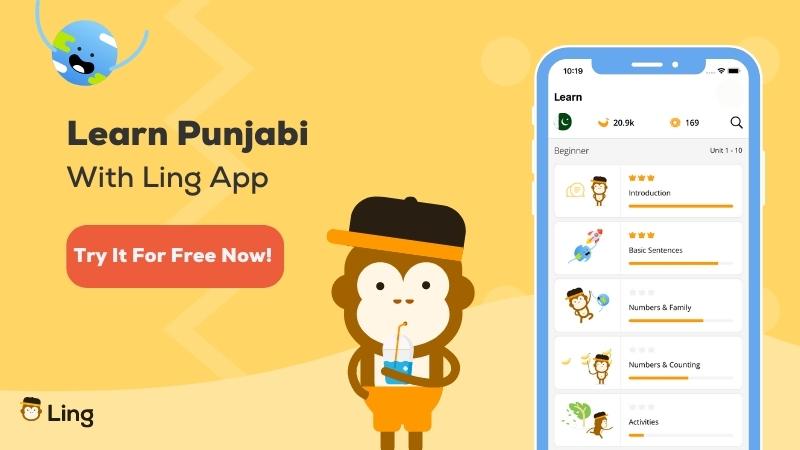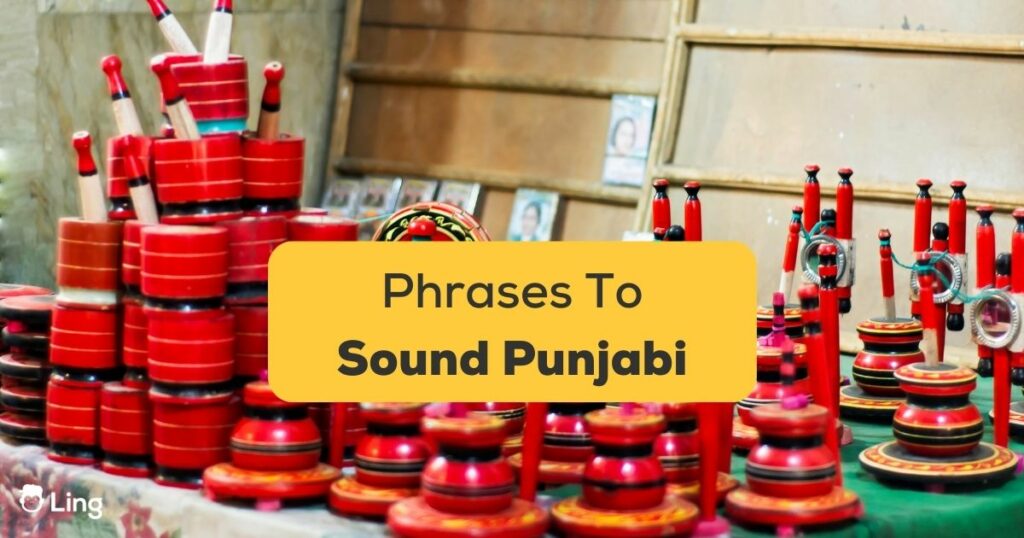Punjabi is a vibrant language with a rich vocabulary and unique expressions. One of the best ways to sound more like a Punjabi speaker is to incorporate Punjabi phrases into your daily conversations. In this article, we will discuss some common Punjabi phrases that can help you sound more like a native speaker. This is the perfect guide if you want your phrases to sound Punjabi!
Tips And Tricks To Sound Punjabi
Punjabi is a language that exudes energy, enthusiasm, and vivacity. Whether you are a language enthusiast or a Punjabi speaker by birth, incorporating Punjabi words and phrases in daily conversations can enhance your language skills and make you sound more like a native speaker. In this article, we will explore some vocabulary tips that can help your language learning, so you sound more like a Punjabi.
Incorporating Punjabi Words
The first step to sounding more like a Punjabi speaker is to start incorporating basic Punjabi words and phrases in your daily conversations. Whether it is a simple greeting or a phrase of gratitude, Punjabi has a rich vocabulary that can be used in everyday situations.
For instance, instead of saying “hello,” you can greet someone with “sat sri akal,” which is a traditional Punjabi greeting. Similarly, instead of saying “thank you,” you can say “shukriya.” Incorporating these common Punjabi words and phrases in your conversations can help you sound more like a native speaker.
Learning Slang And Colloquial Expressions
Punjabi slang and colloquial expressions are an essential part of the language and add a unique flavor to conversations. Learning these expressions can make your language more colorful and help you sound more like a Punjabi speaker.
For instance, “shada” is a commonly used Punjabi slang word that has the literal meaning of “white.” Similarly, “kadak” is a word that means “strong” or “tough.” Learning how people speak Punjabi by using these types of expressions in your conversations can help you sound more like a Punjabi speaker.
Nuances Of Punjabi Pronunciation
The nuances of Punjabi pronunciation are critical to sounding like a native speaker when speaking Punjabi. Punjabi has a unique pronunciation, and some of its sounds are different from those of other languages.
For instance, Punjabi has a sound that is similar to the English “h” sound, but it is pronounced from the throat instead of the lips. Similarly, there is a sound that is similar to the English “v” sound, but it is pronounced with the lips pressed together instead of the teeth.
By understanding the Punjabi language and practicing the nuances of Punjabi pronunciation, you can avoid common pronunciation mistakes and sound more like a native speaker.
Phrases To Sound Punjabi

Sat Sri Akal
This is a traditional Punjabi greeting that is used to say hello. It is a respectful way for western Punjabi people to greet someone and can be used in both formal and informal settings. The phrase “Sat Sri Akal” can be translated to “God is the ultimate truth” in Punjabi translation, and it is a way of acknowledging the divine in the person you are greeting. When you greet someone with “Sat Sri Akal,” it shows that you are respectful of their culture and traditions.
Ki Haal hai?
This is a common Punjabi phrase used to ask someone how they are doing. It is a great conversation starter and shows that you are interested in the other person’s well-being. The phrase “ki haal hai?” can be translated to “how are you doing?” It is a friendly and casual way to start a conversation with someone.
Teek Hai
This phrase means “okay” or “alright” and is used to respond to questions or statements. It is a versatile phrase that can be used in a variety of situations. For example, if someone asks you if you want to go out for dinner, you can respond with “teek hai” to indicate that you are okay with the idea.
Thik Thaak
Similar to “teek hai,” this phrase means “alright” or “fine.” It is a commonly used phrase in Punjabi conversations. It can also be used to ask someone how they are feeling. For example, if someone looks unwell, you can ask them “thik thaak hai?” to inquire about their health.
Balle Balle
This is a popular Punjabi phrase that expresses happiness or excitement. It is often used at weddings or other celebrations and can also be used as an exclamation of joy. The phrase “balle balle” can be translated to “hooray” or “yay!” It is a fun and energetic phrase that can add some Indian Punjabi flavor to your conversations.
Tusi Kee Karan Ge?
This phrase is a common greeting used in the Punjabi language to ask someone what they are doing or what activities they are currently engaged in. It is a polite and friendly way to start a conversation and shows that you are interested in the other person’s current activities. This phrase is commonly used among friends, family members, or acquaintances to catch up on each other’s lives. It can also be used in a professional setting to ask colleagues or business partners about their work or current projects. In general, this phrase is a great icebreaker and can lead to meaningful conversations.
Chak De Phatte
This phrase is a motivational phrase commonly used in the Punjabi language to encourage someone to give their best effort or to go for it. It is a popular phrase used in sports, especially during team sports such as cricket, football, or hockey, where players need the motivation to perform their best. However, this phrase can be used in various contexts, including work, education, or personal life, when someone needs encouragement to achieve their goals. It is a powerful phrase that expresses confidence, determination, and support for the other person.
Ki Kitta?
This phrase is a casual greeting commonly used in the Punjabi language to ask someone what happened or what’s up. It is an informal way to initiate a conversation and can be used among friends, family members, or acquaintances. This phrase is often used to check in on someone’s recent activities or events, and it can also be used as a conversation starter. It is a versatile phrase that can be used in various contexts, including social, personal, or professional settings.
Fer Milange
This phrase is a common farewell used in the Punjabi language to say “see you later” or “until we meet again.” It is a friendly way to say goodbye and express a desire to meet the other person again in the future. This phrase is commonly used among friends, family members, or acquaintances, and it can also be used in a professional setting to say goodbye to colleagues or business partners. It is a warm and welcoming phrase that leaves a positive impression on the other person.
Daso Ki Dasseya?
This phrase is commonly used in the Punjabi language to ask someone to tell you what happened or to provide details about a situation or event. It is a curious and inquisitive phrase that mostly expresses a desire to know more about something. This phrase is often used among friends, family members, or acquaintances to catch up on each other’s lives, and it can also be used in a professional setting to ask for details about a project or an event. It is a versatile phrase that can be used in various contexts, and it shows that you are interested in the other person’s experiences and perspectives.
Wrapping Up

Many people in the Indian population speak Punjabi, and if you want to speak like a pro too, then you should check out Ling. Pakistani Punjabi can be slightly different from Indian Punjabi, but the Ling app bridges that gap and gives you all the tools you need to learn the language.
You can download the app now from the Google Play Store or App Store and start learning Punjabi right away!
Also, check out our articles on Punjabi culture and Punjabi cuisine.





















